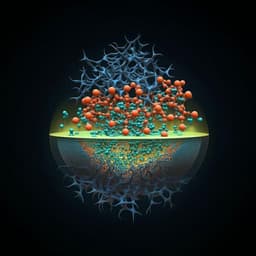
Engineering and Technology
Accurate machine learning force fields via experimental and simulation data fusion
S. Röcken and J. Zavadlav
Explore groundbreaking research by Sebastien Röcken and Julija Zavadlav on leveraging Machine Learning to fuse Density Functional Theory and experimental data for enhanced accuracy in titanium force fields. This innovative approach promises to correct DFT inaccuracies while preserving essential material properties.
~3 min • Beginner • English
Related Publications
Explore these studies to deepen your understanding of the subject.







